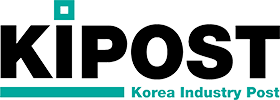(iTers News) - After it wowed consumers with a letter-recognition audio and video pen ‘Touch & Play’, NeoLAB Convergence, Inc. is set to revolutionize the way that a real analog world interacts with a virtual digital domain.
At World IT Show press that ran from May 21 through May 24, NeoLAB took the wrap off a breakthrough user interface, or UI solution that can convert users’ handwritten writings and drawings into a series of 0 and 1 digital signals and then immediately upload and pop up them on a screen of any smart mobile devices.
Coming complete a ‘fountain pen-shaped Neo1 smart pen, a sheet of dot-coded film and a dot-coded paper notebook, the Neo1 smart pen solution detects users’ handwritings and drawings on the dot-coded paper and immediately upload them on their smart phone, or tablet PCs. Users can also email them directly from the paper notebook just by pushing hard the tip of the pen on it.
“This is not firmware, nor software and hardware, but it’s a service ware. This is a sort of disruptive UI technology that promises to shake up mainstream e-book and e-learning system market to the root, opening up new market opportunities. This solution can be an alternative to digital e-textbook,” said Sanggyu Lee, CEO with NeLAB Convergence.
(NeoLAB CEO Sanggyu Lee)
At the core of the solution is the Neo1 smart pen that embeds all the key building block technologies in the small form factor just measuring 16.95 x 14.15 x 170mm. The smart pen is nothing more than a ultra-tiny PC that has a ARM dual-core CPU, 128 megabyte memory system, an OLED screen, an IP optical sensor, a 350mAh secondary battery, a mono speaker, and even a Bluetooth 2.1 wireless chip.
Paper, digital screen in hot sync to share data
The dot-coded paper, or notebook, which is printed with a myriad of ultra-tiny dots, is a key technology enabler, too. Each of the dots has coordinate information.
The working theory is straightforward. Whenever users hand writes something on the dot-coded paper, the built-in optical IR sensor keeps track of what the pen draws or writes and reads them catching and analyzing the coordinate image date.
Working the next magic is the dual core CPU that decodes and processes the data to send it to their smart phones or tablet PCs using the in-built Bluetooth 2.1 modem chip. Then, users find the same drawings and letters pop up their smart phone, or tablet PC screen with no data latency to share it simultaneously both in the digital and analog worlds.
“This solution is to synchronize paper and digital worlds to allow users to share the same information ,” said Dr. Eddie S. Lee, CTO with NeoLAB.
Applications are plenftiful. The smart pen solution can be used with an interative e-learing system, enabling students, or e-learners do some mathematical tasks on the dot-coded papers and then send it to an e-learning system data center to server to get a feedback. For example, the server can analyze e-learners' hatitual mathmetical errors and give an interactive feedback to correct them.
Combined with a smart TV, the solution also can work as an interactive user interface to convert the TV screen into an electronic bulletin system. If the dot-coded thin, transparent film is attached to the TV screen, for example, teachers can use the TV as an electronic bulletin system to scribble down notes, or mathematical formulas.



